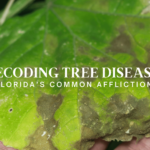Florida’s Arbor Laws: A Comprehensive Guide
Understanding Florida’s Arbor Laws: What You Need to Know
Florida’s rich ecological diversity is one of its most defining features, and trees play an integral role in this. To protect the state’s green canopy, Florida has several arbor laws in place. These regulations safeguard both public and private trees, ensuring that the state remains lush and green for generations to come. In this guide, we delve deep into these laws, helping residents and businesses make informed decisions.
Highlights of Florida’s Arbor Laws
- Tree Removal Permits: Many counties in Florida require homeowners and businesses to obtain a permit before removing trees, especially heritage or protected species.
- Mangrove Trimming and Preservation Act: A crucial legislation, it regulates the trimming and alteration of mangroves within the state, given their significance to Florida’s ecosystem.
- Mitigation Requirements: In some instances, if trees are removed, one might need to plant new ones or pay into a tree bank as compensation.
- Setback Requirements: Some counties mandate that trees must be planted a certain distance away from structures, roads, or utility lines.
- Endangered Trees: Florida has a list of endangered or protected tree species. It’s prohibited to cut, harm, or transplant these trees without specific permissions.
How Arbor Laws Impact Residents and Businesses
- Land Development: Developers need to be aware of tree preservation regulations and ensure that they adhere to them while planning construction projects.
- Home Renovations: Homeowners planning expansions or renovations need to check local tree regulations, especially if it involves cutting or relocating trees.
- Penalties: Non-compliance with these regulations can result in hefty fines or even legal consequences.
Navigating the Arbor Laws
- Stay Updated: Arbor laws can vary by county, so it’s essential to stay updated with local ordinances.
- Consult an Arborist: Local arborists not only understand tree health but are also familiar with regional laws and can guide you on best practices.
- Document Everything: If you’re making significant changes to your property involving trees, maintain thorough documentation. This can be crucial if questions arise later.
Florida’s arbor laws serve as a testament to the state’s commitment to preserving its rich biodiversity. While they may seem stringent, they play a crucial role in ensuring that Florida remains the vibrant, green paradise that residents and tourists alike cherish.


